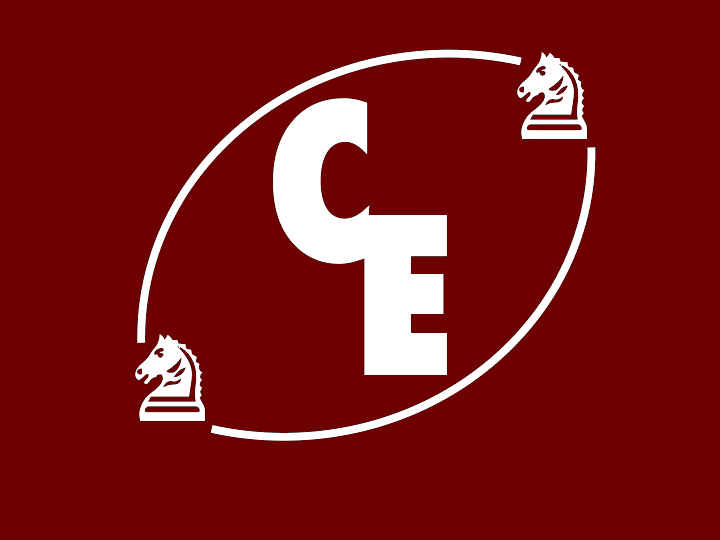ADINFER-ChessEVAL ©
Dedicated Chess Computers


MMO
| Introduction to the story of Chess computers |
|
Throughout history, chess has been considered the perfect game for a computer application.
While on one hand, it has simple and
clear defined rules, on the other hand we can question
whether its numerous theoretical solutions are complex
enough for the ever-faster computers.
However, it took a long time of development to arrive to this achievement.
The history of the chess-playing machine started long before the era of computer science. This is an entertaining journey through the history of computer chess, its most relevant characters and, of course, the involvement of the computer.
|
| Chapter 1: 1769, The Turk and other automatic chess machines |
sThe first and probably most famous chess machine in the world was "the Turk": the Hungarian privy Councilor Wolfgang von Kempelen (* 1734, † 1804) built it in 1769 at the request of the Austrian Empress Maria Theresia. The name "Turk" came from the apparatus of the player dressed in Turkish robes and sitting behind a box of 110x75x75 cm which otherwise looked like a desk. This box supported the most important pieces: the chessboard and its figures. An arm of the Turk was able to put the chessmen in place like a human being would do, accompanied by mechanical noises such as creaking and clacking. During public demonstrations, Von Kempelen often stood next to the machine, but was never approaching the board. During the demonstrations, the audience was admiring the numerous gears, rollers, screws and rods, while searching for small chess players who could have been hiding inside! Today we know that the French champion Mouret and renown masters such as the German theorist Johann Baptist Allgeier (* 1763; † 1823) and the Frenchman Schlumberger were able to win at the game against the Turk. However, the illusion was so perfect that many big names of that time, such as Joseph II and Catherine the II, competed against the Turk without ever winning. It is well known, for example, that Napoleon, after loosing the third game in a row in 1809 (presumably against Allgeier) let his anger out and threw the pieces across the room. Another known contemporary keen at unraveling the mystery of the chess automaton was the American writer Edgar Allen Poe, who, in one of his essays published in April 1936, entitled "Mälzel's chess player" (by this time the machine was no longer served by von Kempelen, but by Johann Nepomuk Mälzel), set up the following thesis, still remarkable today: “once the principle according to which a machine can be taught to play chess is discovered, as an extension to such principle it must be true that the game can also be won, and as an additional extension, it must be true that any game can be won, winning against any opponent.” This thesis was still holding throughout the end of the 20th century, since the path to ever faster computers would lead to ever stronger chess-playing machines. The goal was, of course, to push the human world champion off the throne. In his analysis, however, Poe overlooked the fact that there may be practical obstacles, which may delay the attainment of the highest goal, as for a long time, the computing power necessary to reach the abilities of the world champion was not achieved! His conclusions, however, also assumed that a person would be required to move the pieces of the Turk! The practical "operational" problems of the Turk, incidentally, were larger than one might initially imagine. To begin with, the demonstration required that all the doors of the machine were open, which would give the audience transparency to what was happening inside. In fact, this would help the person operating the machine in changing its position several times during the game. It was more difficult because, the magnets at the bottom of the board had to be transferred by candlelight so little light was available (electricity was not yet available). Also the operation of the arm was not so easy for the chess player. Lastly, there was the danger resulting from the candle heating the air inside, which could become scarce, and this limited the duration of the demonstrations from the outset. Today it may seem surprising that at that time this trick could never be completely uncovered, but, at that time, the knowledge of technical and human possibilities was not yet widespread. The final enlightenment of the game with the Turk came only in the 70s to 80s of the 20th century, when John Gaughan, a props builder for a professional magician of Los Angeles, devoted himself to the reconstruction of the Turks in his spare time. The result was a mechanical feat, which for sure was not completely identical to the original, but which operation was reproduced very well. It took a total of 18 years to rebuild the machine, which was finally presented for the first time in November 1989 as part a conference on the history of magic in Los Angeles. In fact, the historical Turk was, of course, no chess-playing machine, but only a big robot operated by humans. This was the real power of von Kempelen: the Turk is still rightly regarded as a prime example of great mechanics of his time (the kinematic of the arm was an outstanding accomplishment of engineering) and - in a later stage - a prototype machine that could mimic human sounds in a purely mechanical way. This version was able to articulate about 30 words and even repeat predefined words! Because of its tailored mechanics, the Turk can be considered the granddaddy of all of today's chess computers. Unfortunately, a fire in the Chinese Museum of Philadelphia destroyed the machine in 1854, but this ended up only magnifying its myth! The best and most complete treatise on the Turk and its history can be found in Tom Standage’s book "The Turk” (Tom Standage: the Turk - The story of the first chess machine and his adventurous journey around the world, Campus Verlag 2002, ISBN 3-593-36677-0). The book is not only very detail oriented, but also engrossing! No one knows how many more chess machines were created by the ingenious minds of the previous century machine builders. However, at least, two chess machines got some fame: - first of all, Ayeeb, which was constructed in 1869 by the Englishman Charles Alfred Hooper, and under which, among others, American champion Harry Nelson Pillsbury (* 1872 † 1939) hid to operate the machine. This machine was destroyed also. It happened during a tour through the United States: a fire burned the device in 1929 on Conny Island. - In 1876 a different well-known device appeared: Mephisto, built by the Englishman Charles Godfrey Gumpel. With the 1878 Hungarian chess master Isidor Gunsberg (* 11.02.1854, † 02.05.1930) as operator, it even won a tournament in London. Incidentally, Gumpel was one of the biggest critics of the Turk and in 1879 he even tried to "prove" that the Turk was a hoax. Although his approach was lacking of today’s scientific understanding, it has long been considered conclusive: he simply estimated the number of possible character configurations to be 1032 (how he has come to this number, it remains unclear ...) and further assumed that you must have these positions coded using punch cards. Its technical role model in this direction was the Jacquard Loom, which was actually "programmed" by means of punched hole cards. Following his absurd logic, he wasted no time in implementing the vast number of possible moves from these configurations or mechanically consider the implementation of such apparatus, but calculated only how many hours of work would have been required to punch the holes in the cards! He estimated that a human would spend about three seconds for each hole. Thus he estimated that after 50 years, a person working 300 days a year at 10 hours a day would be able to punch approximately 180 million holes. From this, he concluded that it would take around 500,000 billion people doing nothing else than punching holes for these cards for their entire working life. From that Gumpel logically concluded that the construction of a mechanical chess player would never be possible. He never thought that such a mechanical device could function with anything than punched cards. As you can see, the success of the chess computer was already largely influenced by the men standing behind them... What makes them similar to the modern chess machines in fact… |